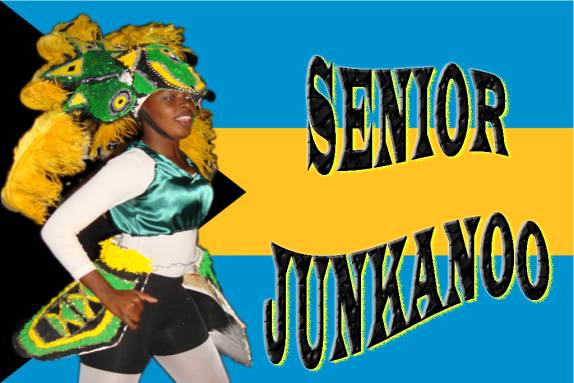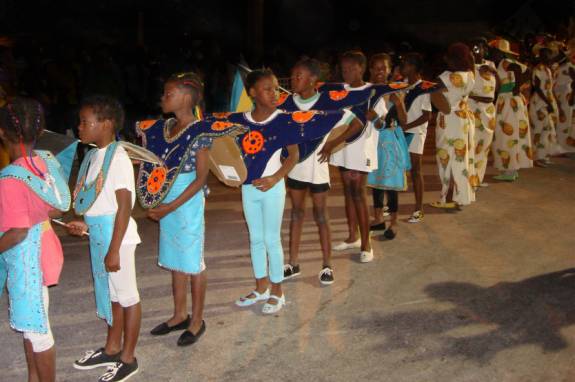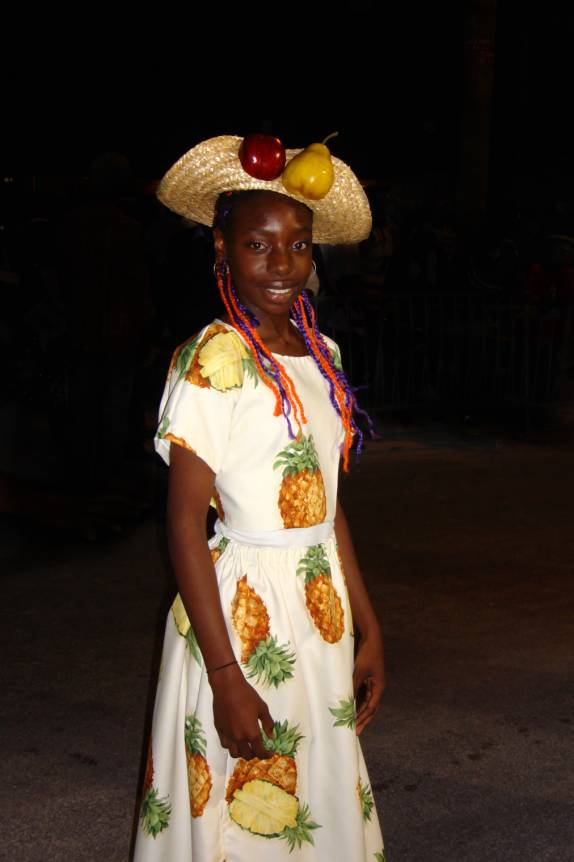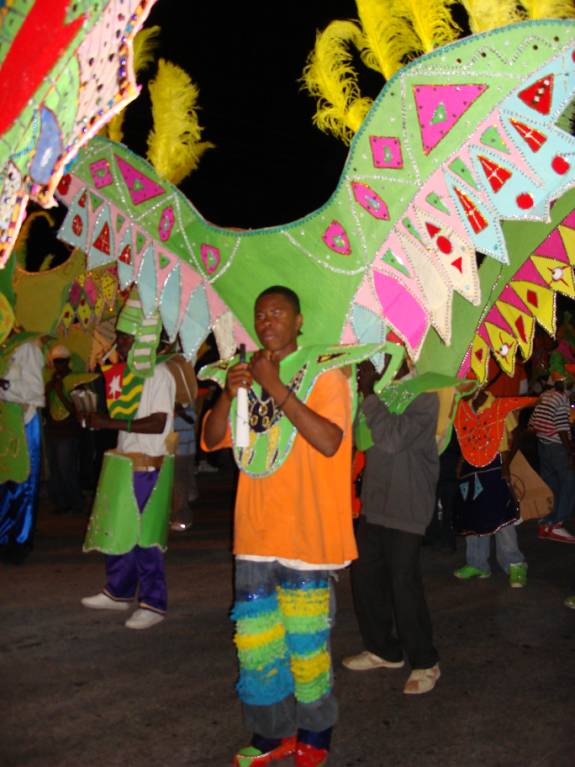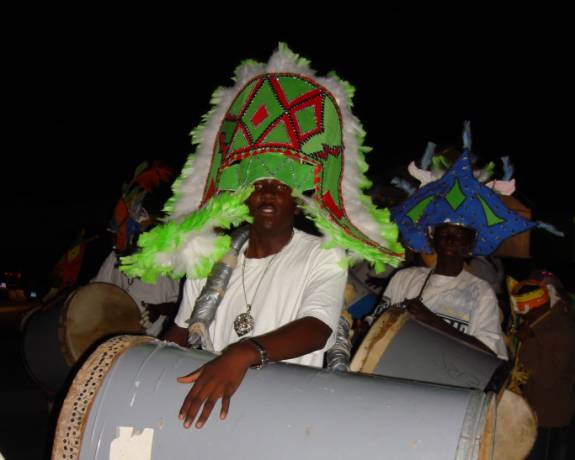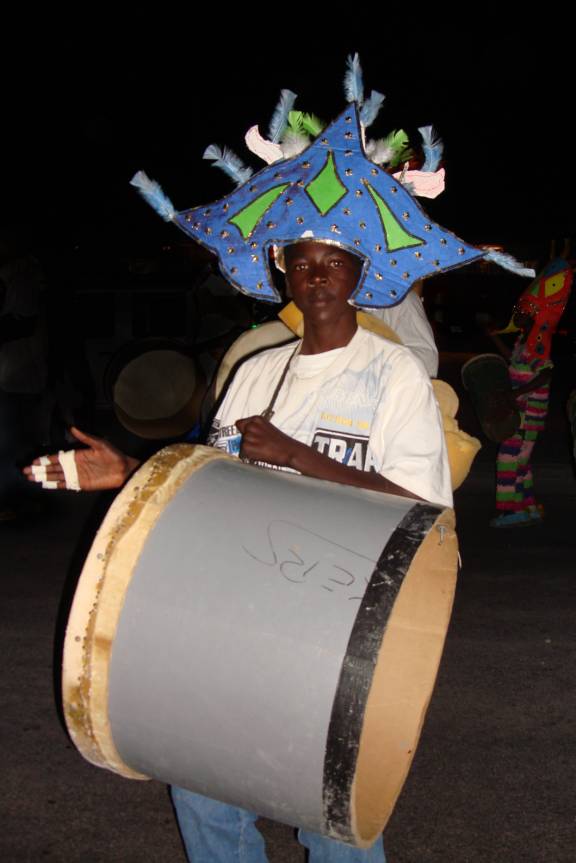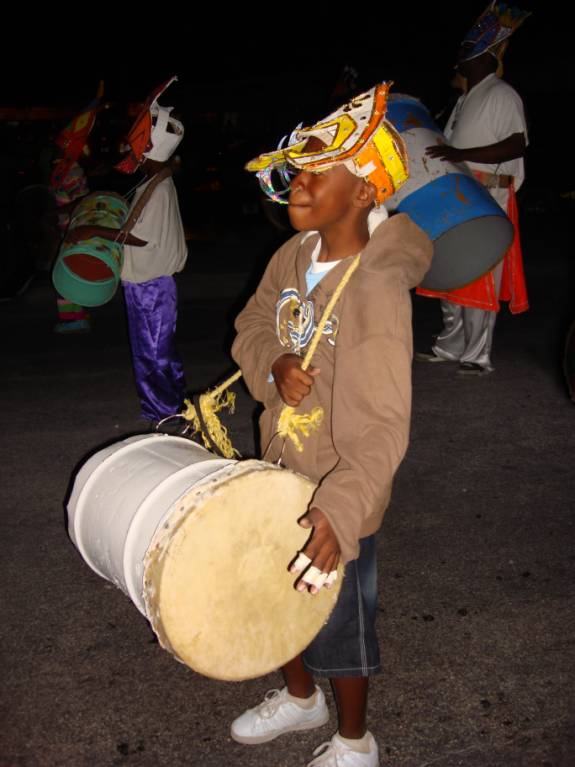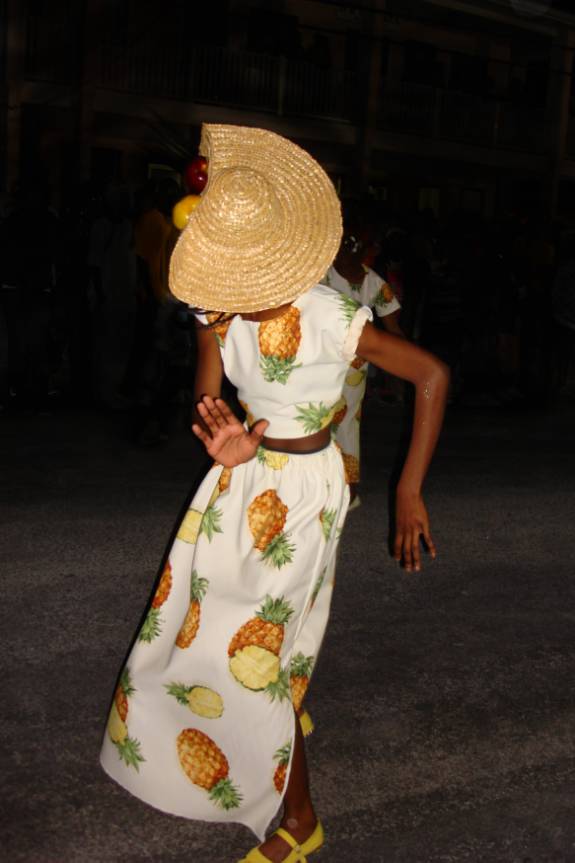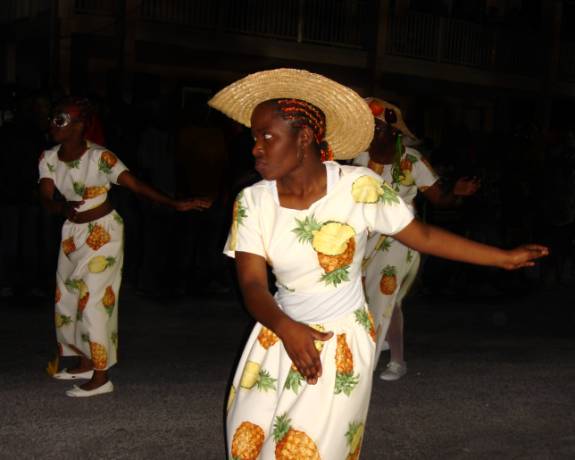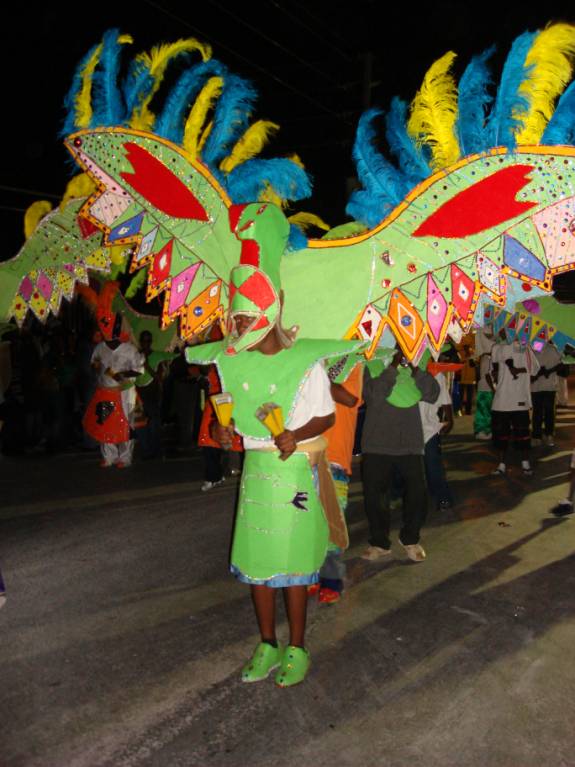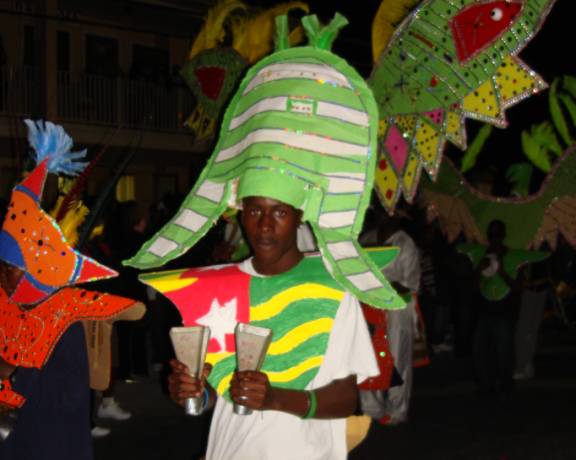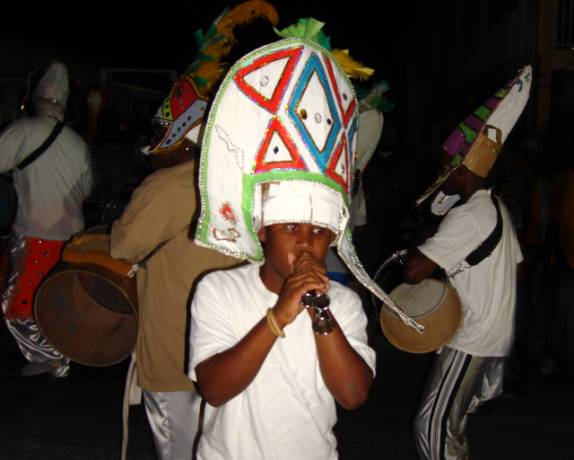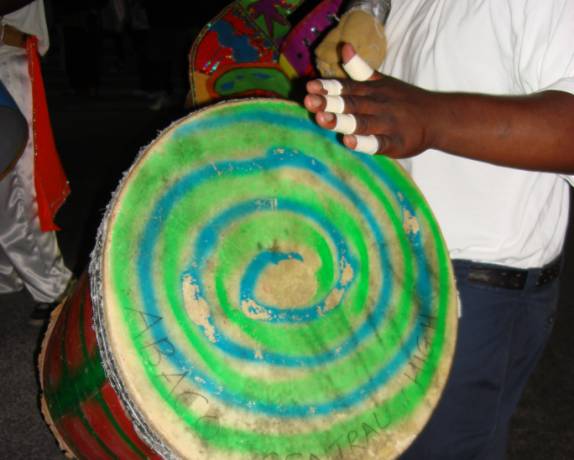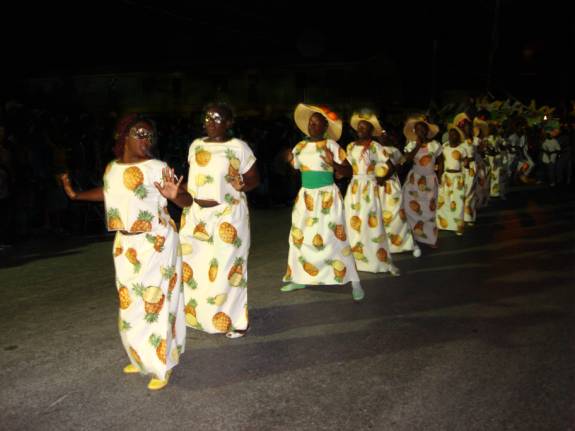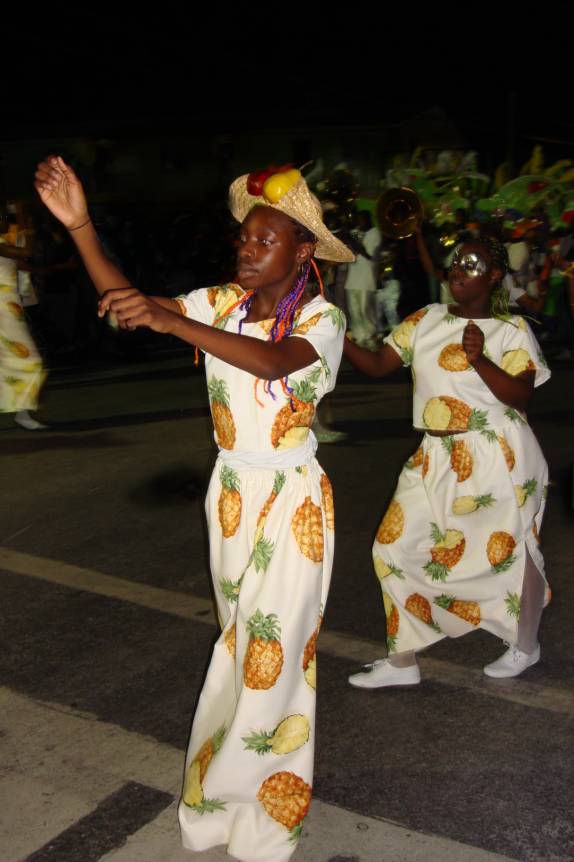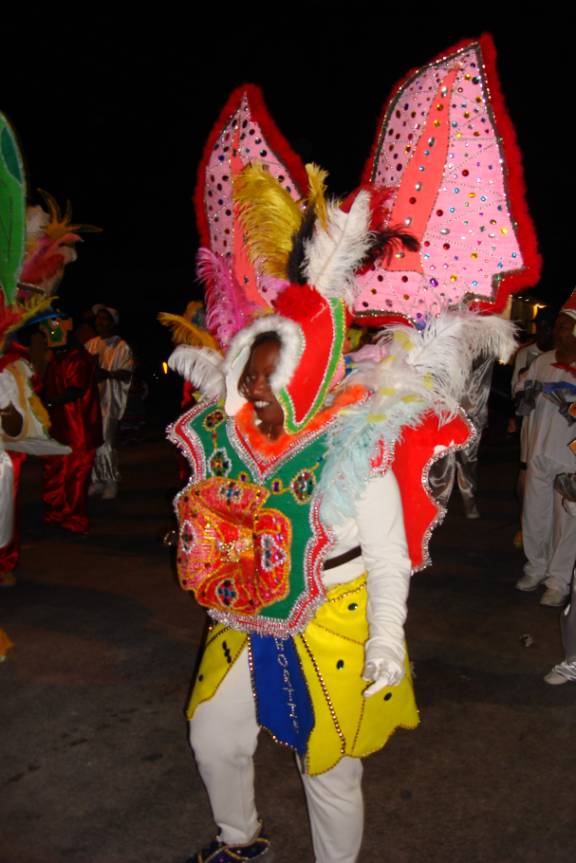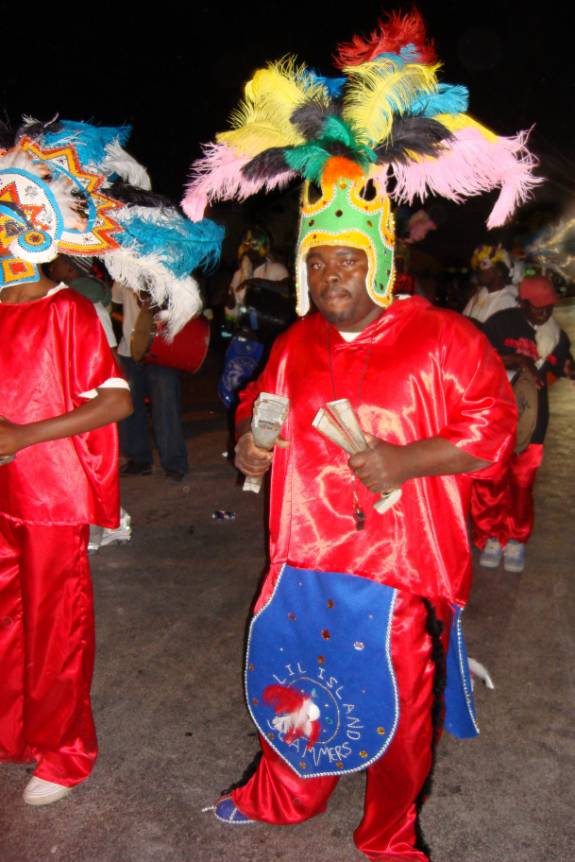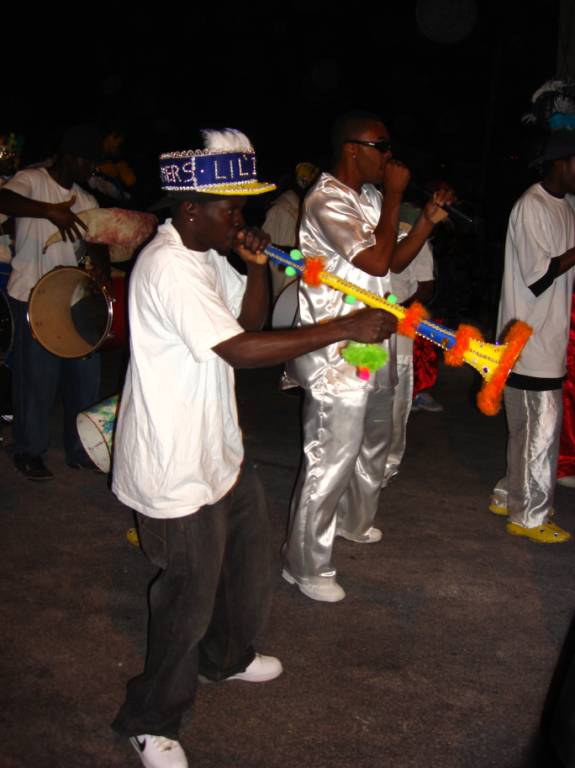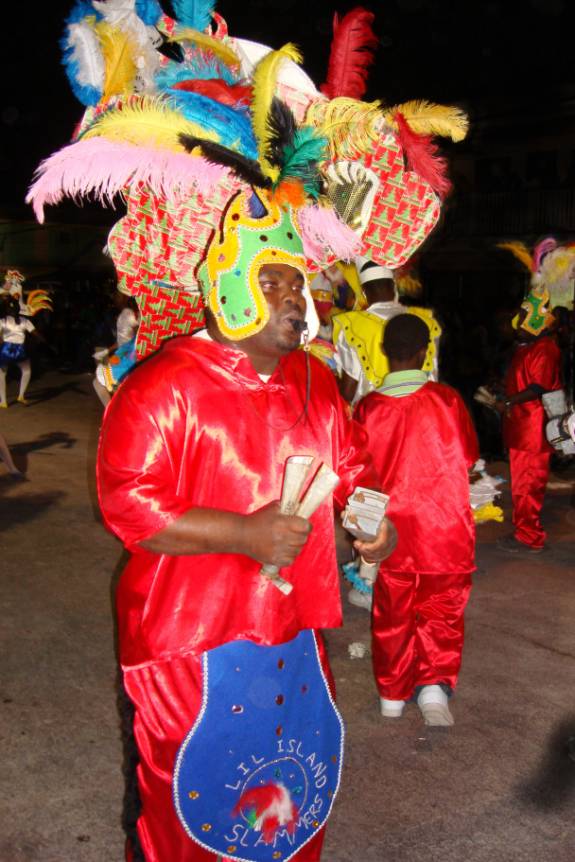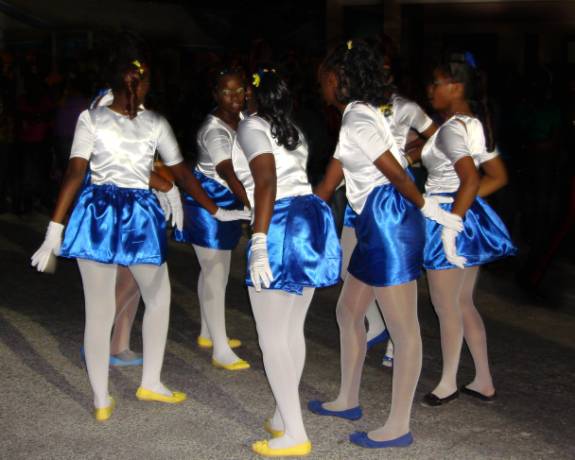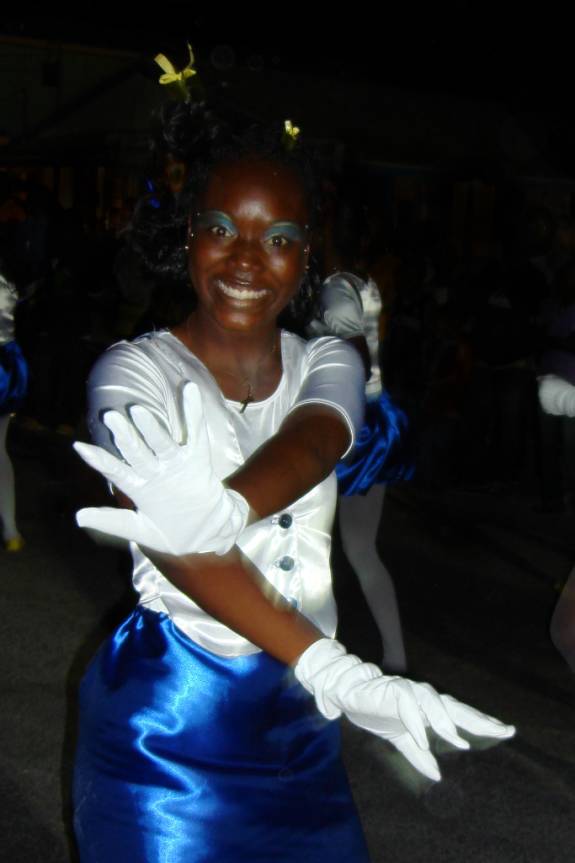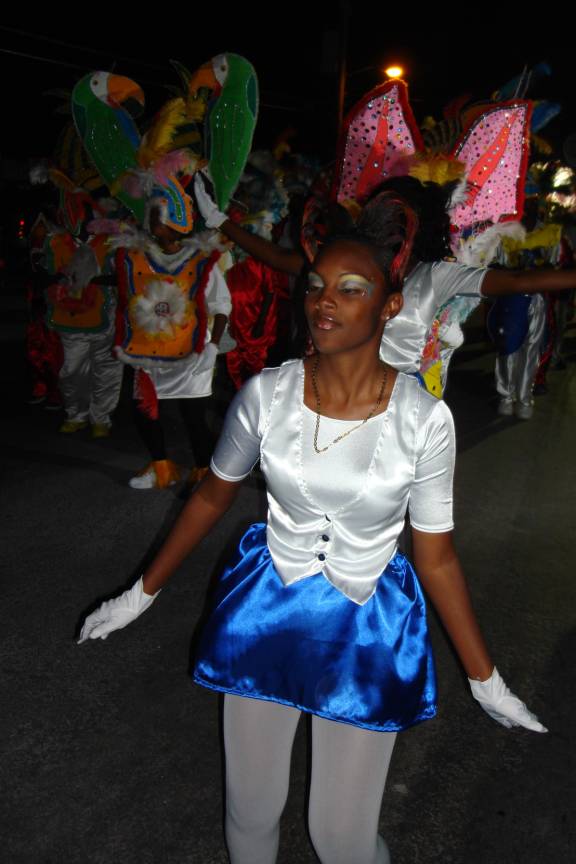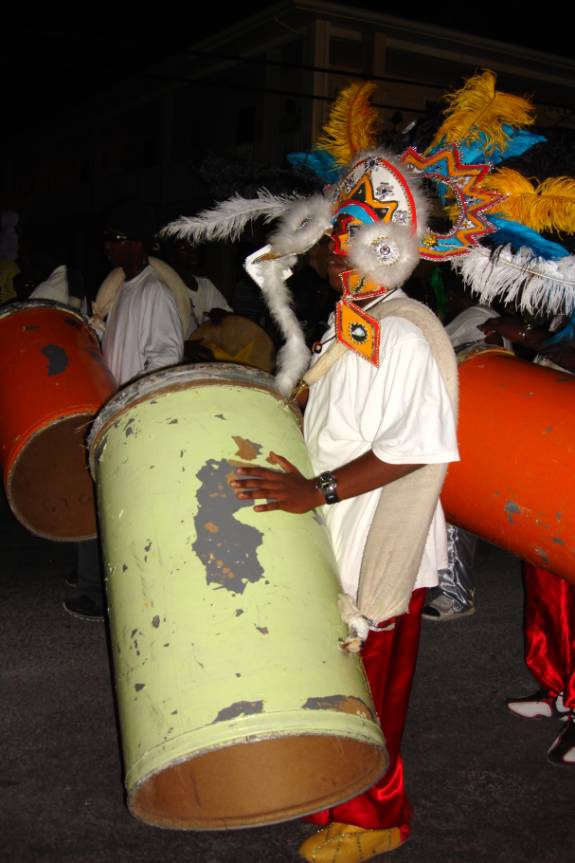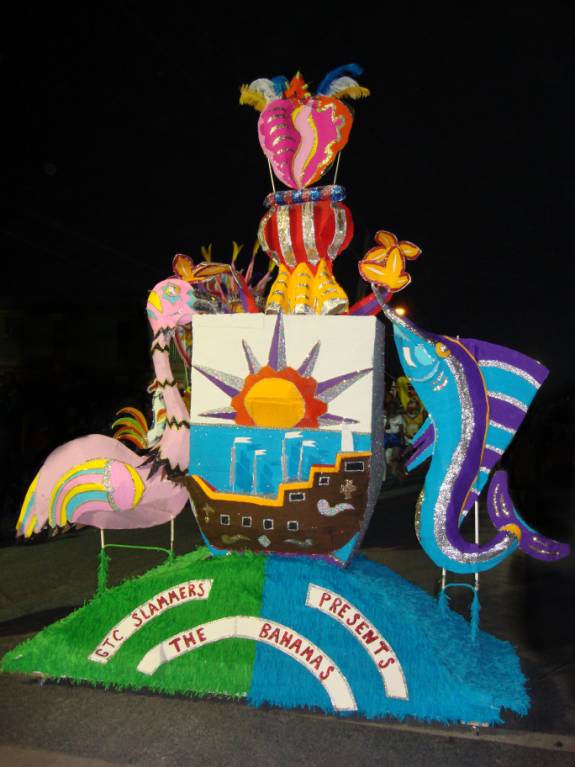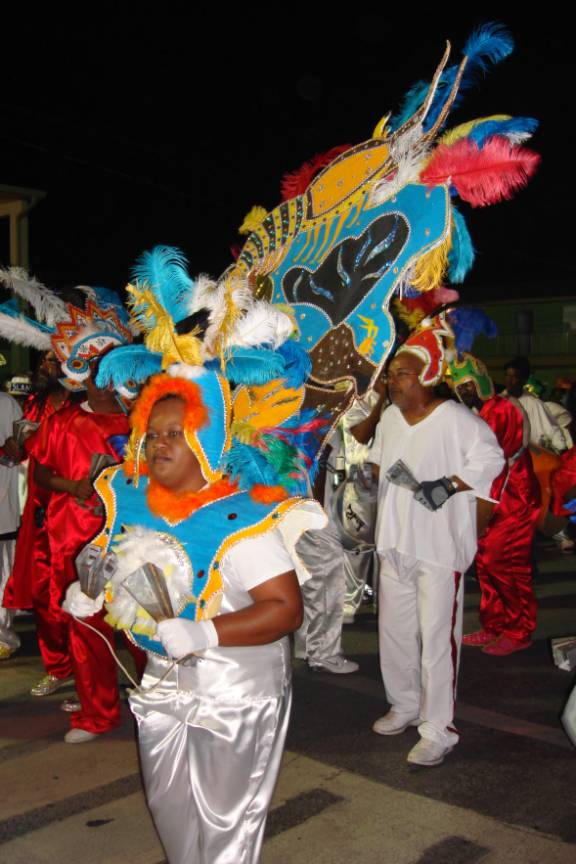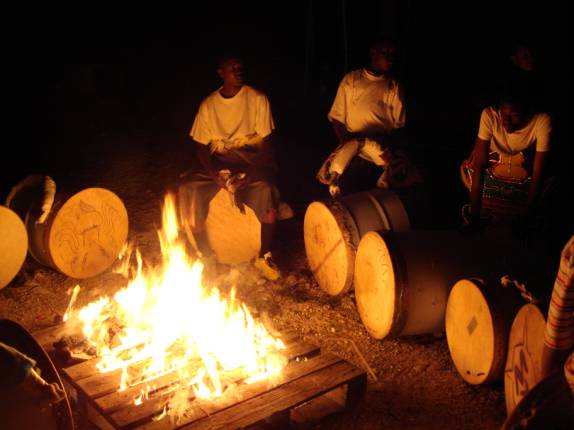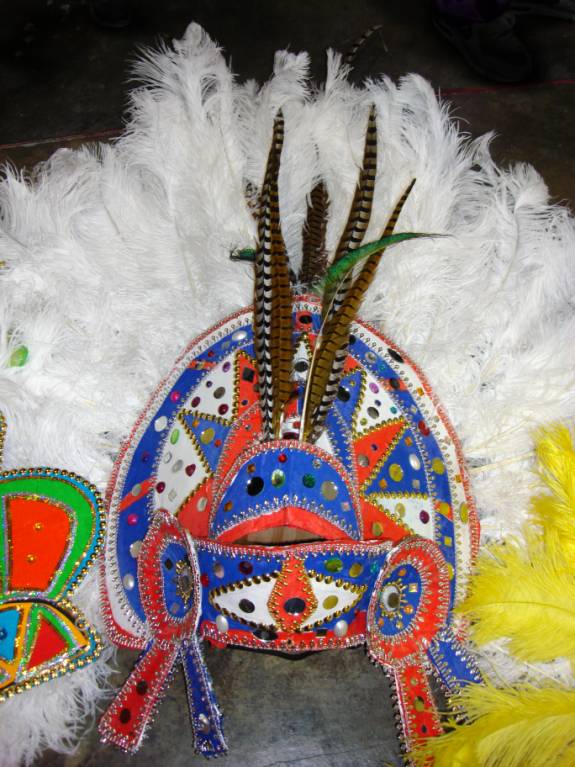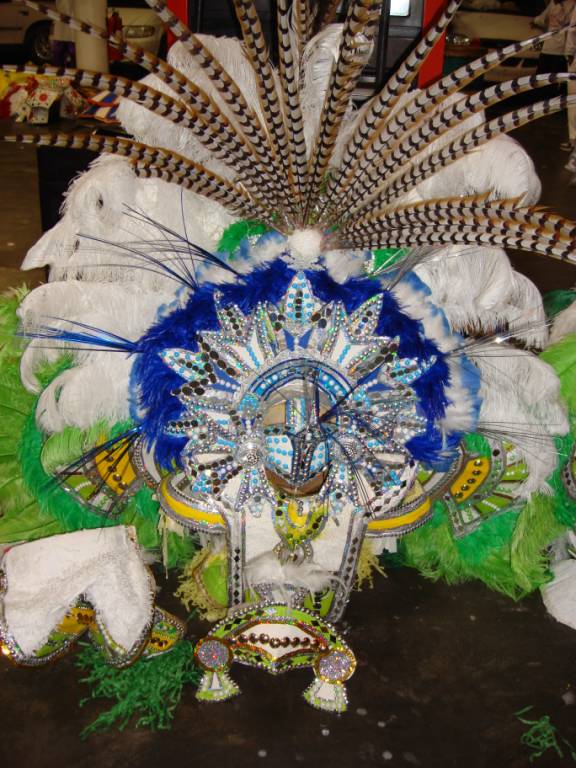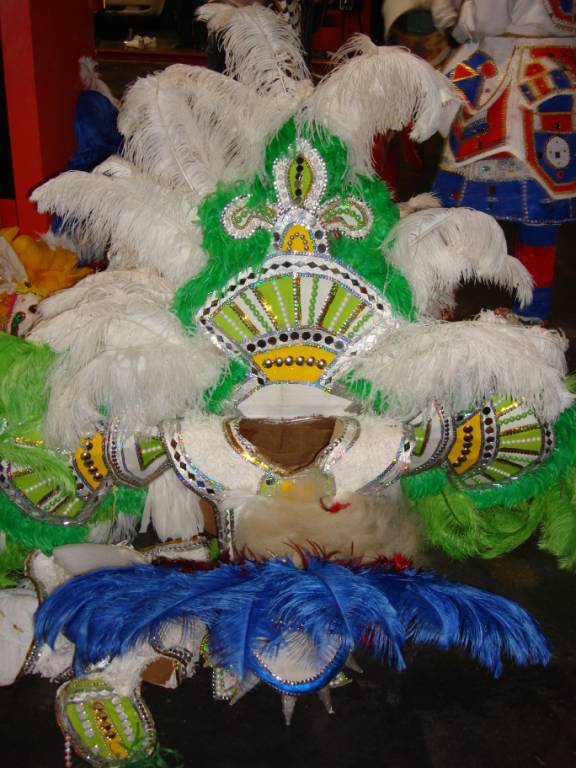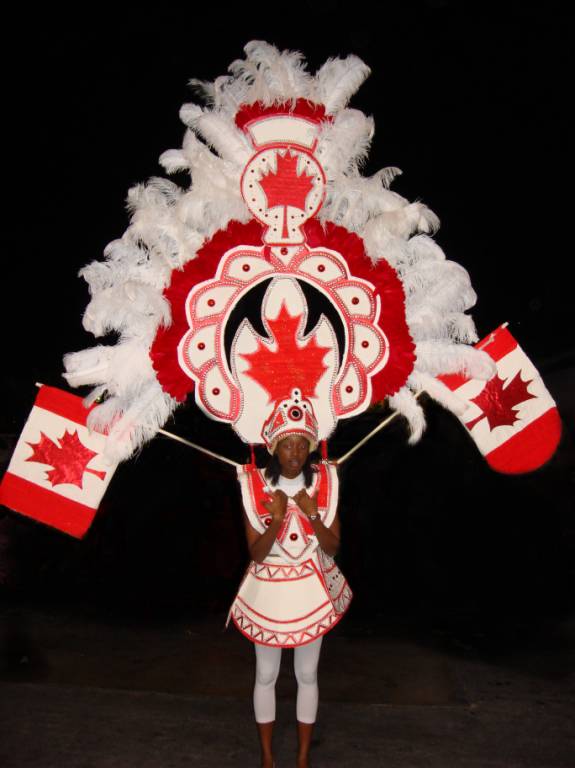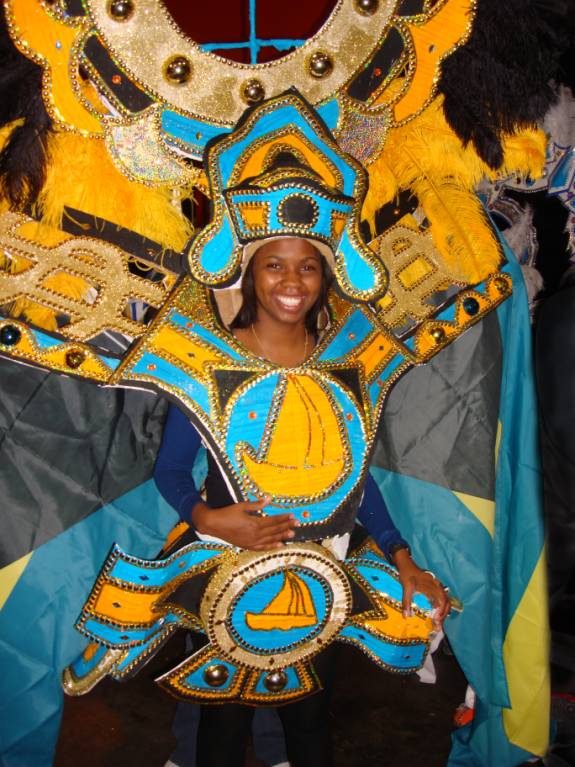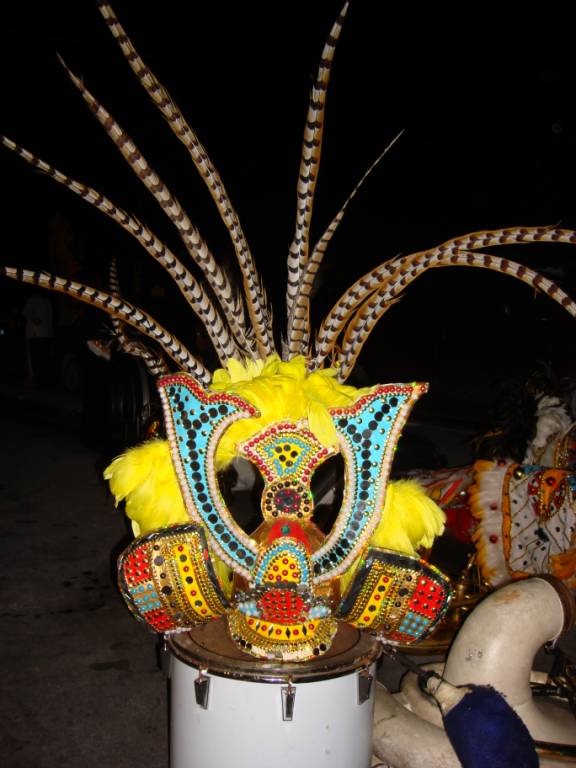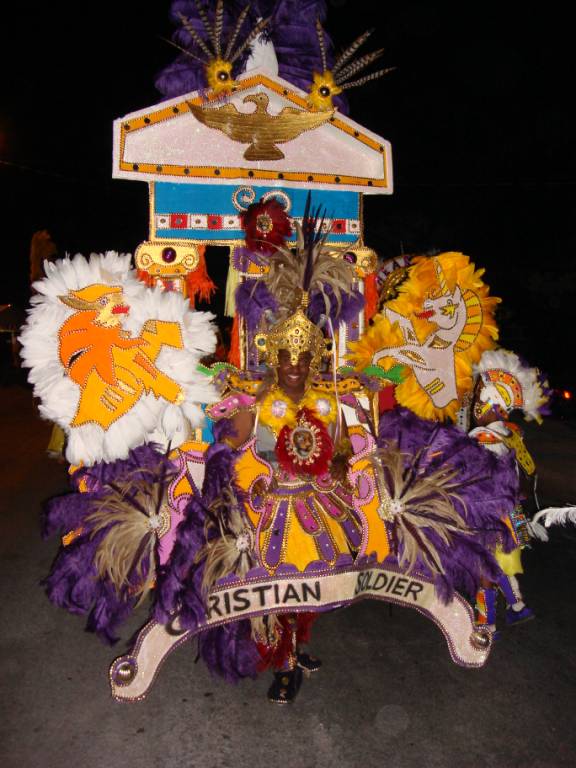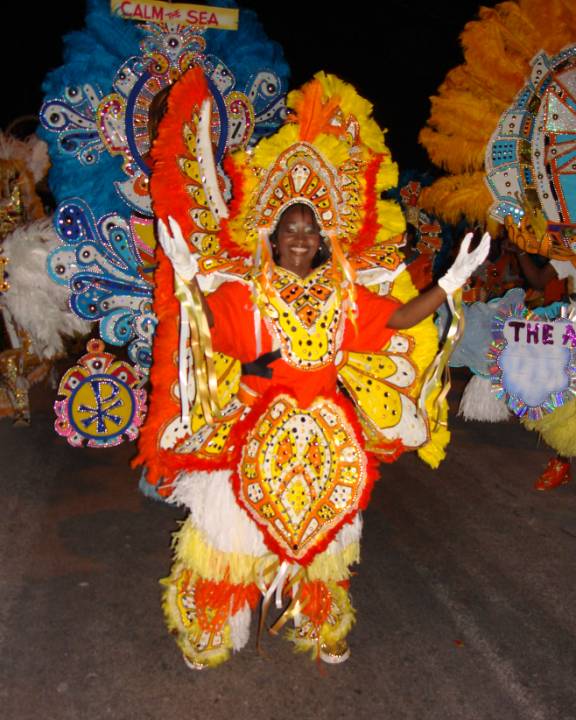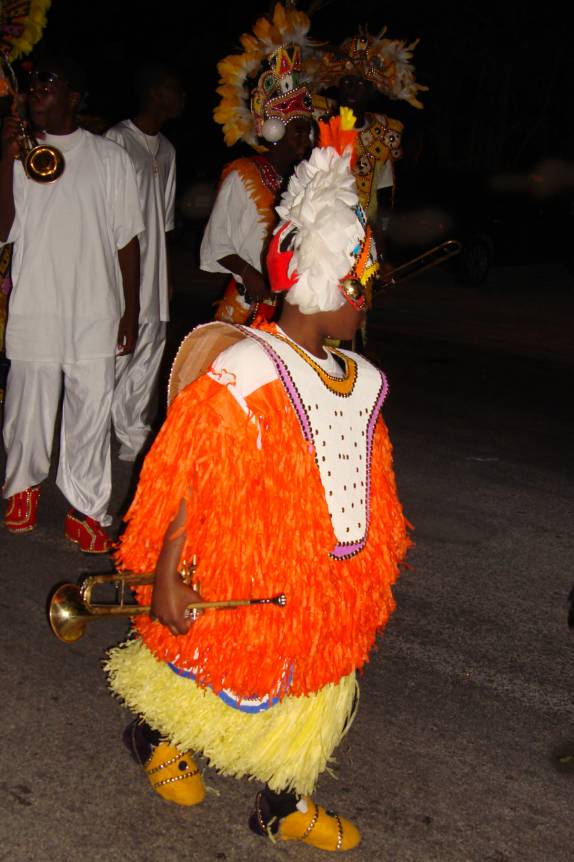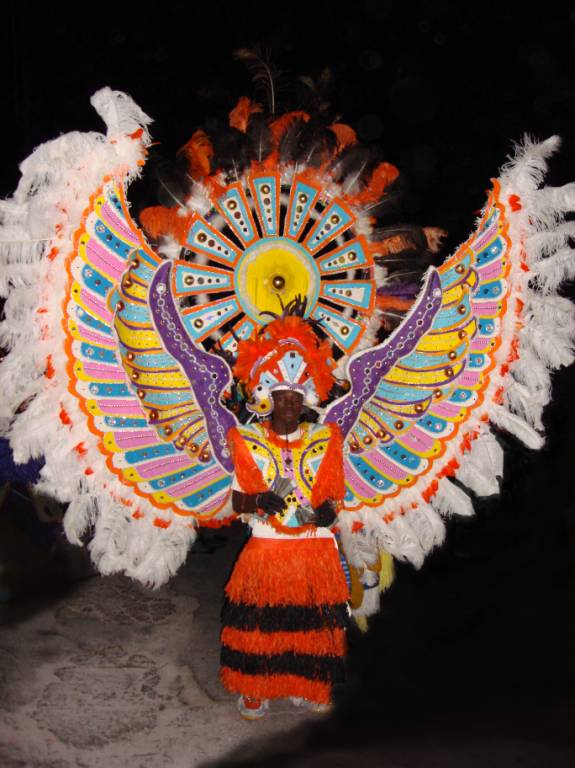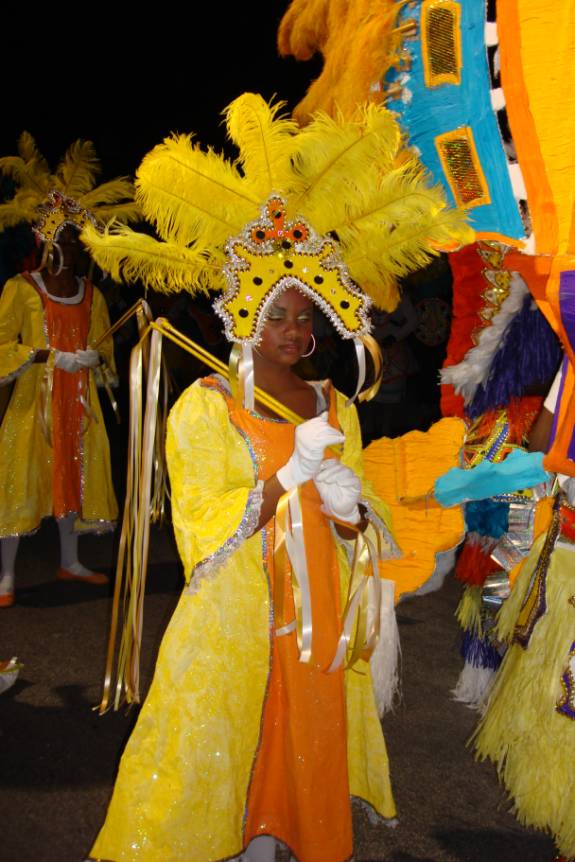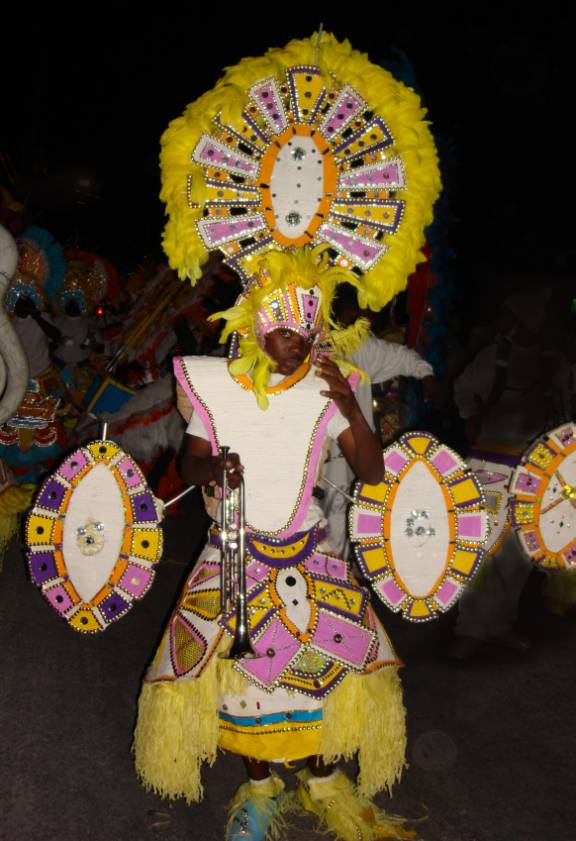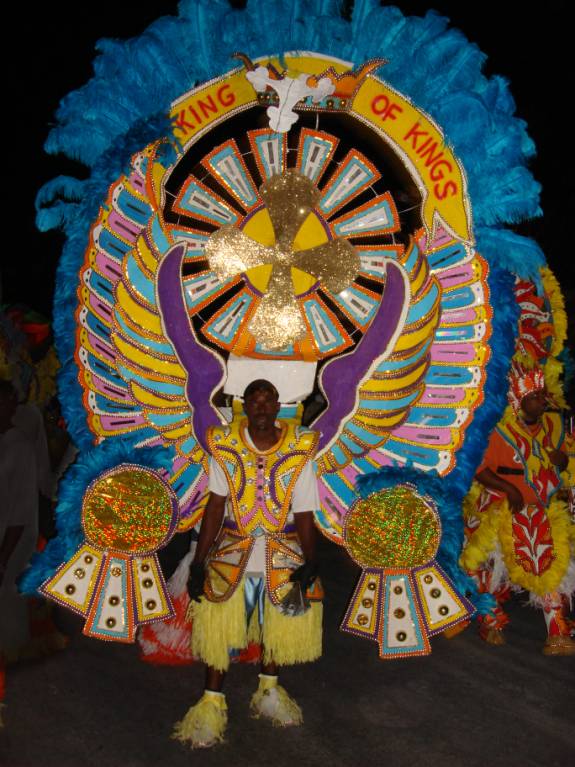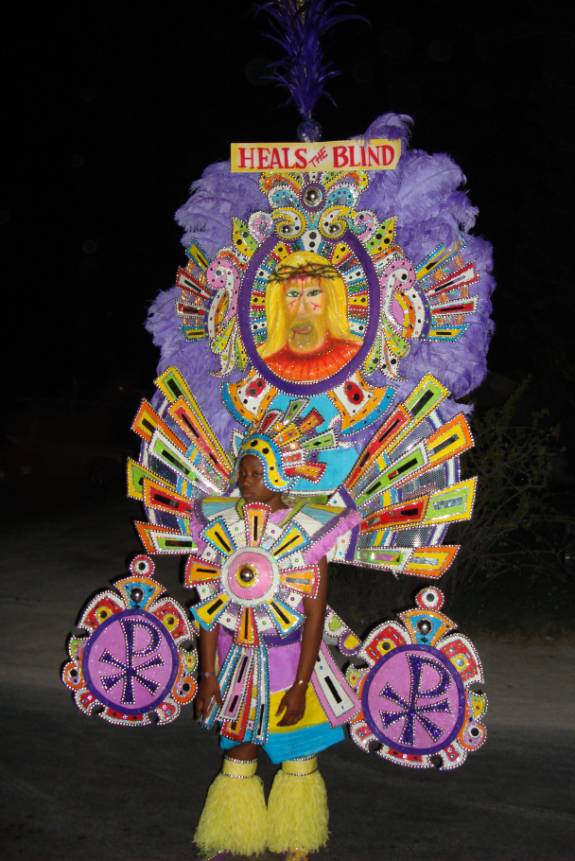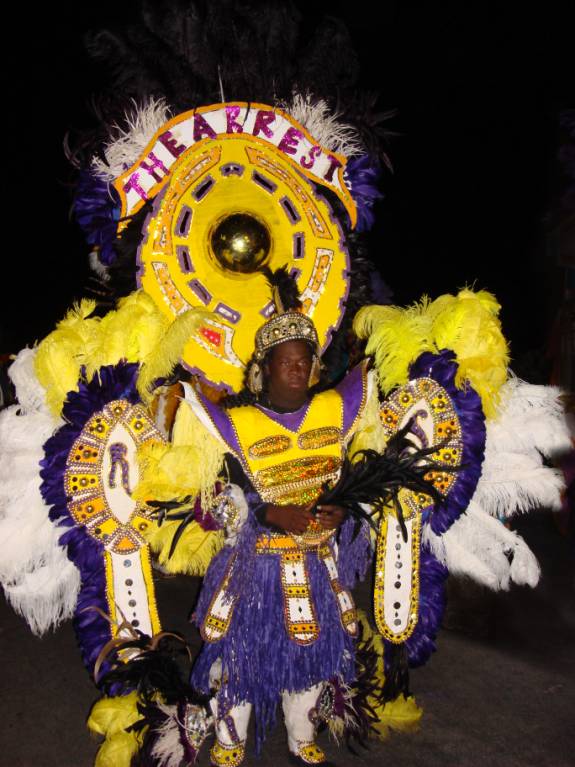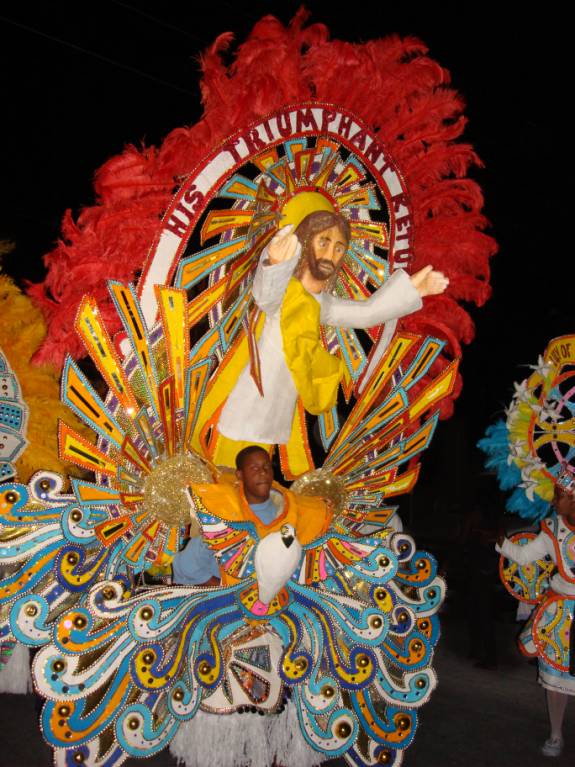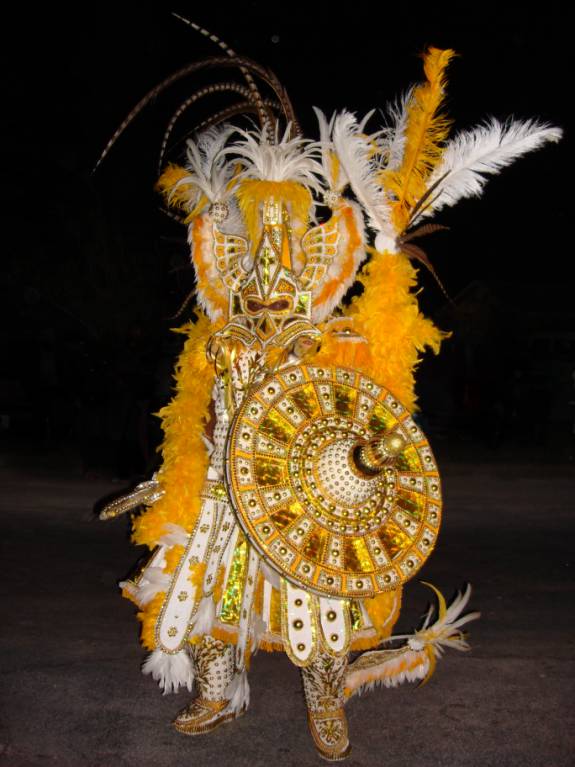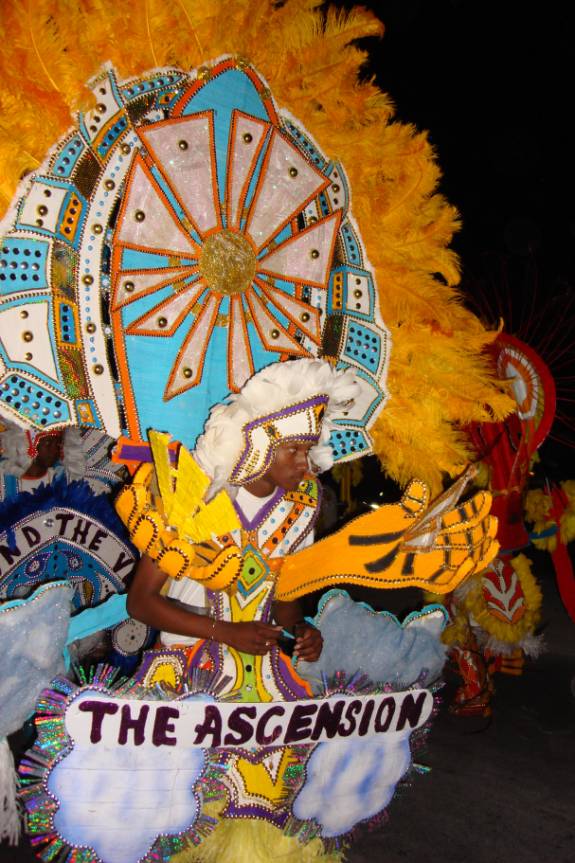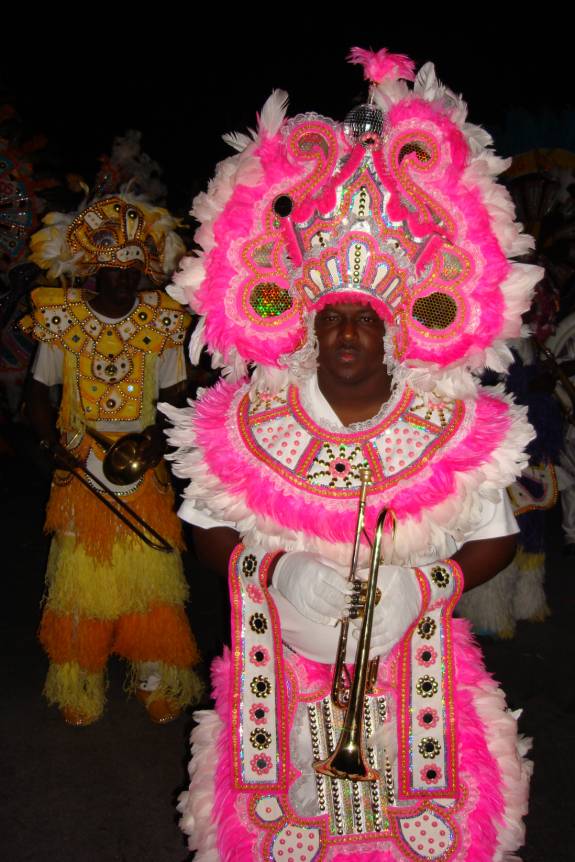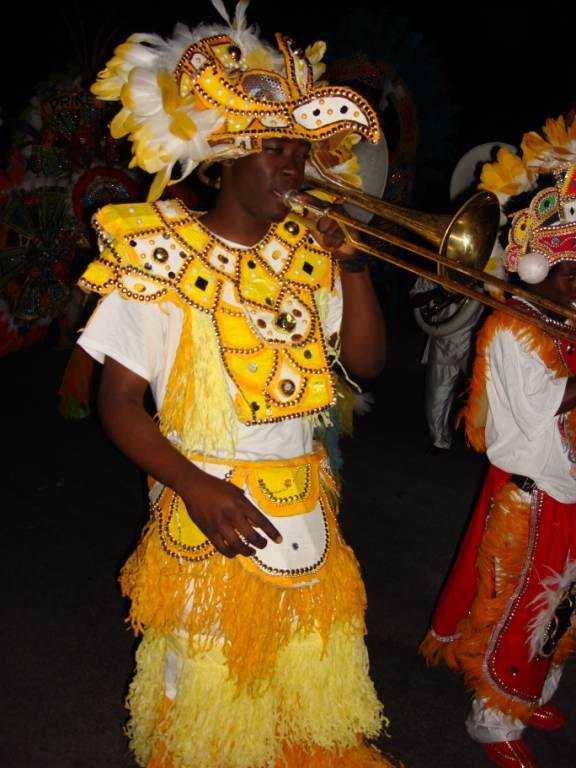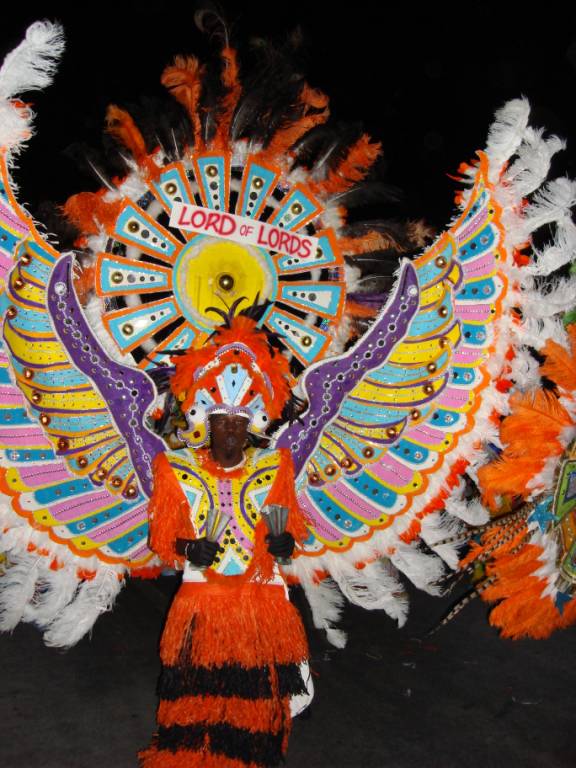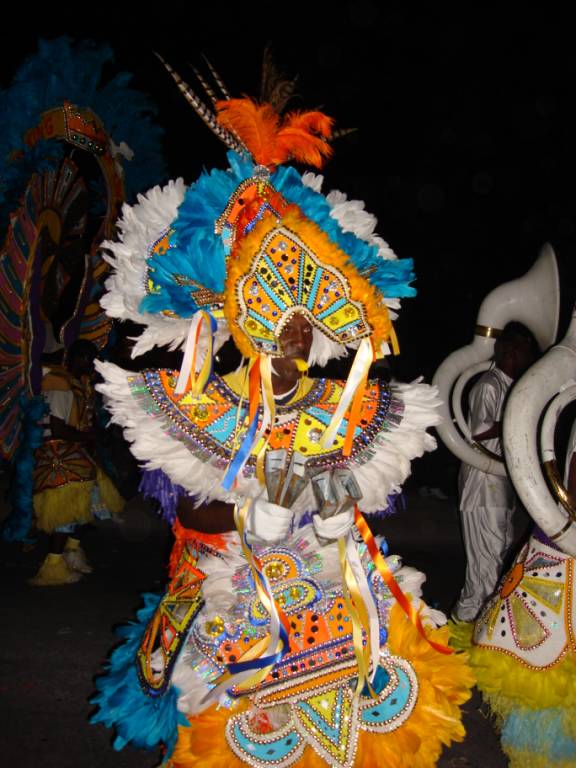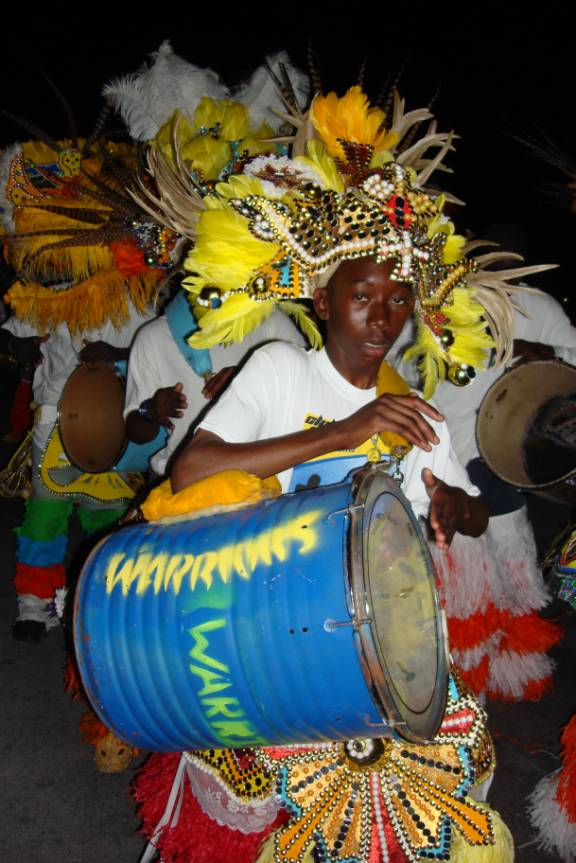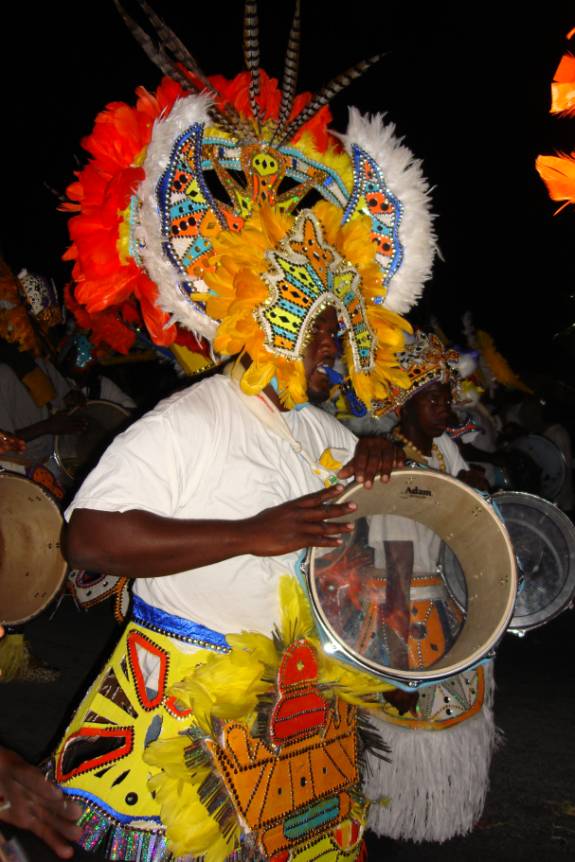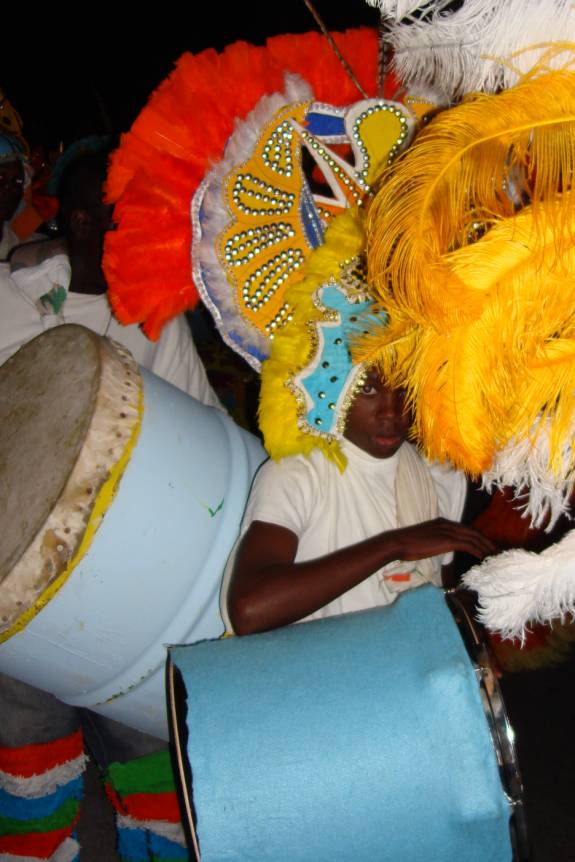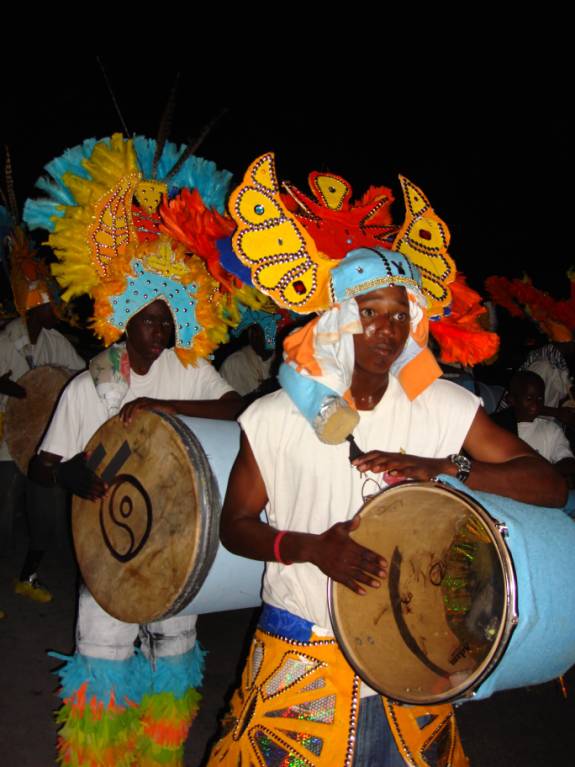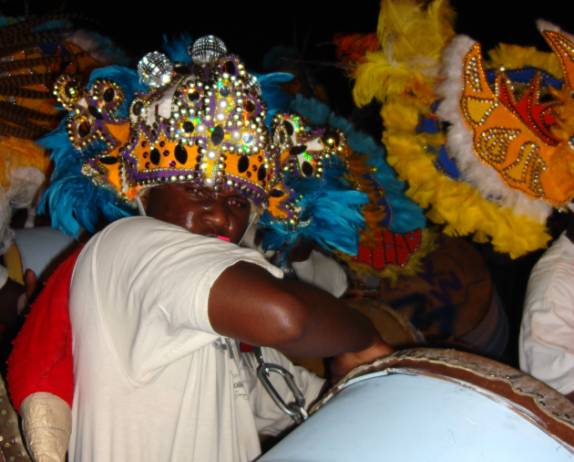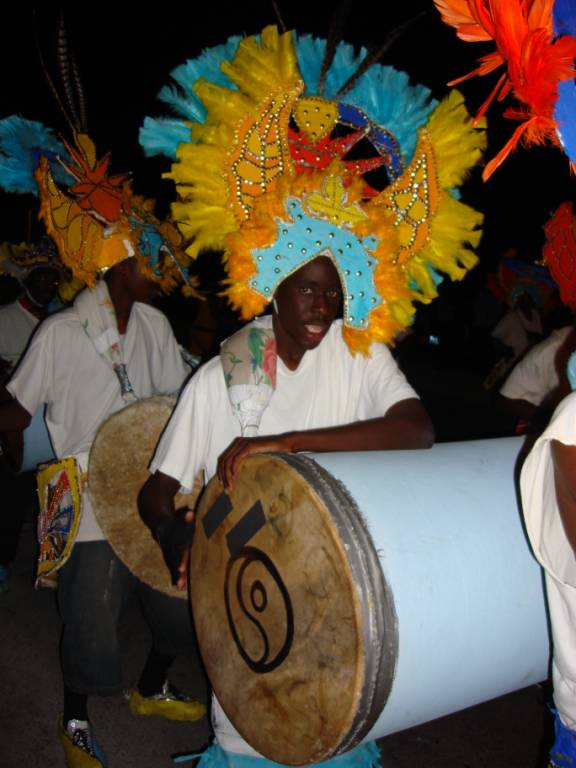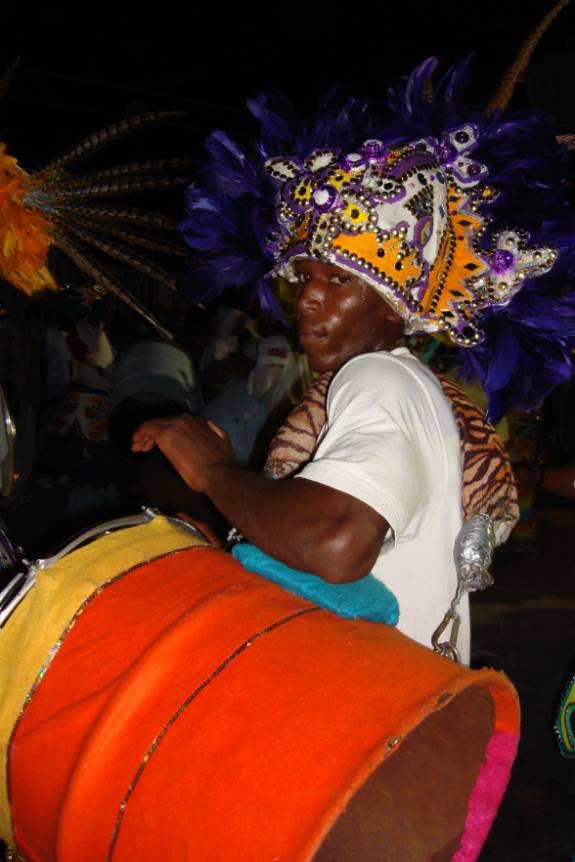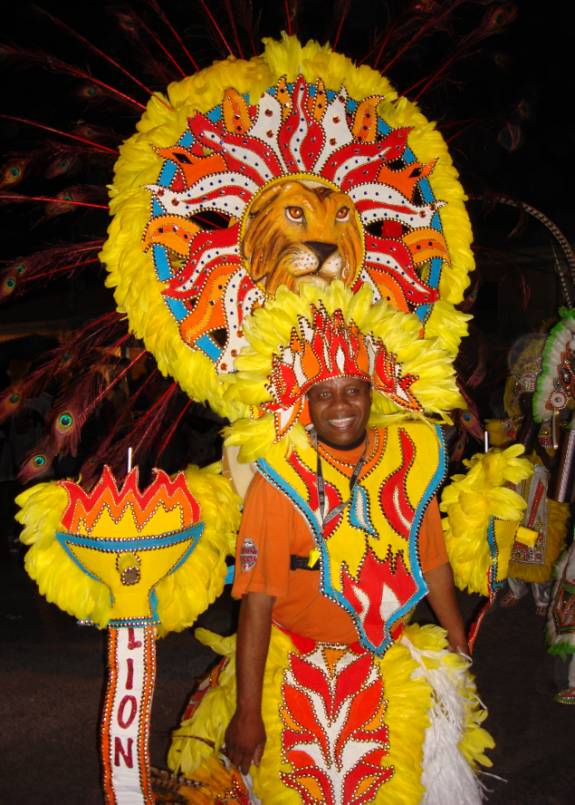|
|
|
|
Site Index:
|
UPDATE#09 02/21/09 (NIGHT)(JUNKANOO PART 1)
Howdy
Everybody, The
adventures of 2006, 2007, 2008, and 2009 through 02/20/09 have been published on
the website. We continue with the
latest edition. UPDATE
2009 #09 02/21/09
SENIOR JUNKANOO PART 1 of 2 At
last update, we had completed the daytime activities at the Abaco Beach Resort
and Boat Harbour Marina in the Bahamas. 02/21/09
SATURDAY MARSH HARBOUR,
ABACOS, BAHAMAS SENIOR
JUNKANOO PART 1 of 2
Judy and I departed from the marina so as to arrive in the town center
before 8pm. Half an hour later,
the Senior Junkanoo event commenced. There
were so many good and interesting pictures of this event that I have divided the
coverage into two separate update editions.
I think you will enjoy the pictures that are often self-explanatory and
reveal the level of civic pride and historical importance of this unique
Bahamian celebration.
Before the slaves were brought here to the Bahamas, the costumes, that
they normally wore and used in Africa, were fashioned from dirt and mud from the ground.
They also used various paints to decorate their faces and bodies.
Here in the Bahamas, the slaves would gather any type of material that
they could find in order to make their costumes. Many of the common materials in
use at that time were shrubs, leaves, stones, bottles and paper. Generally, they also made
their masks from these ubiquitous materials. Even after Emancipation, the slaves
continued with their Junkanoo parades and adhered to traditions frequently using these same
materials. The majority of those early costumes portrayed Neptune and Amphitrite.
The 1930’s saw the introduction of sponge costumes. Sponging was the
number one industry in the Bahamas at the time. During the 1950’s, most costumes were made
from cloth and fringed tissue paper. In the 1960’s, some groups abandoned their
shirt and trousers costumes and introduced shoulder pieces and skirts made out
of cardboard and fringed crepe paper. Over
the years, the floats, instruments, and costumes have evolved with the
elaborate use of brilliant colors, feathers, and modern materials. The design and construction of the costumes and associated equipment has
elevated into projects requiring many, many hours, days, and months of intense
preparation.
The music that is called Junkanoo is very primitive, but at the same time
very infectious. The basic musical instruments are often made right here in the Bahamas,
and consist of the various drums, cowbells, horns, whistles, scrapers and brass.
During the 1930’s,
"scraper" instruments became an integral part of the Junkanoo parade and added a
unique twist to the broad range of musical sounds emanating from the band groups.
Today, costumes are created over 7 major materials; Cardboard, Crepe Paper,
feathers, Aluminum
Rods, Tie Wire, Contact Cement, and Glue.
The first thing in constructing a costume is to build a frame using the
aluminum rods. The design for the costume is then drawn out by hand onto the
corrugated cardboard. The excess cardboard is subsequently removed from the
frame by cutting it off with shears or blade cutters. Wires are then pushed
throughout the grooves of the cardboard to achieve the distinctive form and
shape of these locally artistic masterpieces. Contact cement is liberally applied
to the cardboard pieces to stick and hold them together. The cardboard pieces
are then attached to the frame by tie wires.
Afterwards, the structure is painted with white paint to
camouflage the drabness of the corrugated cardboard pieces and strips. Although it is a very demanding and time-consuming process, the decorative steps
that follow are what invokes the real passion for the avid Bahamian Junkanooer. The costumes
are often
fringed with crepe paper which is primarily imported from Europe. The edges of the
crepe paper are fringed with pinking shears, or scissors, and cut into narrow,
horizontal strips. The strips of crepe paper are then painstakingly applied to
the cardboard, one strip at a time, using common glue. Estimates indicate that many
costumes may require as many as 3,000 to 5,000 strips of multi-colored crepe paper
for a winning combination in the major Junkanoo parades.
The addition of flamboyant feathers has elevated the art form to even
greater dimensions.
Most of the first drums
were made from wooden barrels with cured goatskin or sheepskin stretched and
nailed over one end of the barrel. The other end is left open. The drum is
carried under one arm and supported by a thick strap, which runs over the
opposite shoulder. The drummer
plays or beats it with his bare hands.
Initially, the integration of brass instruments with the traditional sounds of Junkanoo was not
too well received. Today,
most major Junkanoo groups can boast of having a brass section to accompany the
traditional goatskin drum, cowbells, horns, and whistles. Many members of the Royal
Bahamas Police Force Band, various youth group marching
bands, and numerous members of various church bands comprise the majority of the
present-day brass sections heard at Junkanoo celebrations.
In addition to bicycle
style horns, some participants utilize a type of manual foghorn more commonly found
on boats,. The foghorn and bicycle horn are often doubled or tripled for a
louderand more dramatic sound effect.
A new style of drum that has been recently incorporated into the Junkanoo
percussion sections is the Tum-Tum, which is actually a set drum made from fiberglass
and plastic. The skins of these higher pitched drums are more susceptible to
breakage. These drums are most frequently used by the lead drummers to play the major
rhythm beats for the Junkanoo group.
The large drums are heated by an open fire to make the skins extremely
taut. The process requires a watchful eye to
prevent scorching yet still achieve the desired level of shrinkage to create the
desired musical tone.
As
the Junkanoo music and dance is distinctly African in nature, most modern day
Junkanoo dance choreographers try to make their routines as ethnic as possible.
The “Cowbells” add
great tone, rhythm, and beat. These
noisy, flat-sided clapper bells are commonly made from galvanized sheet metal or cast
iron. They normally range in size from 6 to 14 inches long and are usually
played in pairs. They are often joined at the end by a cord or chain. With a
pair held in each hand, they are vigorously shaken or struck together. In
some instances, they may be joined together in such a way that there might be 2, 3, or even as many as 5
bells per hand.
These huge drums are affectionately referred to as B-52’s or Rocket
Launchers.
CONTINUING
UPDATES ARE IN PROGRESS… WATCH FOR THEM, COMING SOON… POST
SCRIPT:
We sincerely hope that you will review
the previous years of compilations to give context to the current editions. Please let us know if you have any special suggestions and
thoughts.
REMEMBER: The website
is now fully active and you can visit it at any time.
You can review any of the 2006, 2007, or 2008 logs and learn more about
the crew and our plans. Enjoy. ATTENTION:
SPECIAL NOTE:
You may contact us via email anytime. Thanks
for allowing us to share our life and adventures with you. Lotsa
Luv, Fred
Reed and Judy Law AMARSE MT40 "AMARSE"
is pronounced "AM-ARE-SAY".
Our website is: www.amarse.net .
|
|
Fred H. Reed |
www.amarse.net © 2006 2007 2008 2009 2010 2011 |

